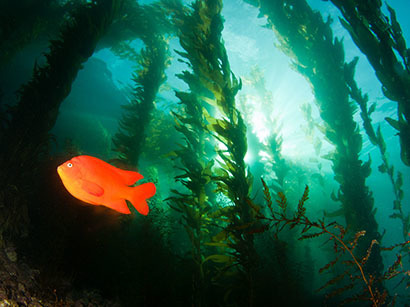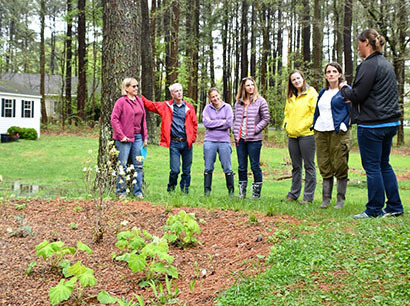|
NOAA, the State of Louisiana, and other federal and state partners have been working to develop natural infrastructure projects that restore habitat and protect communities along the Louisiana coast to help slow the loss of land and increase resilience. We’re restoring barrier islands and creating marsh habitat in the Barataria Basin, helping build up first lines of defense from storms and flooding in the New Orleans area. Learn More >
Do you know someone who has done great things for coastal and marine habitat conservation? The NOAA Office of Habitat Conservation and our partner, American Fisheries Society, are seeking nominations for the 2018 Dr. Nancy Foster Habitat Conservation Award by June 22. Nominees must have demonstrated extraordinary dedication, innovation, and excellence to NOAA-related habitat conservation fields. Learn More about the Nomination Process >
The next level of coral conservation goes beyond protection to reef regeneration. Historically, coral conservationists have focused their efforts on protecting these invaluable marine resources from direct environmental threats, like land-based pollution and damaging fishing practices. While these efforts continue, researchers are now also looking at ways to tackle coral reef restoration more proactively including building the resilience of corals through coral nurseries in the ocean and in the lab. Learn More >
 |
NOAA recently provided $1.5 million toward a five-year partnership with the National Fish and Wildlife Foundation to restore kelp forests and rocky reef off the California coast damaged by oil spills and hazardous waste. Priority activities will include restoring 37 acres of kelp forest and planning for restoration of a rocky reef at the Montrose site, essential habitats supporting a diversity of fish and marine life that are important components of commercial and recreational fisheries, and other recreational industries. Learn More >
 |
To help the health of the Tred Avon River, owners of a home in Easton, Maryland installed a rain garden on their property. This area, where stormwater runoff collects and slowly filters into the ground rather than quickly washing over impervious surfaces, diminishes the flow of excess nutrients and sediment into the water that can harm water quality and damage oyster reefs. Funding and advice on installing the rain garden were enabled by the Choptank Habitat Focus Area. Learn More >
From May 22 through July 2, NOAA and partners will conduct a two-part, telepresence-enabled ocean exploration expedition on NOAA Ship Okeanos Explorer to collect critical baseline information about unknown and poorly understood deepwater areas of the Southeastern United States including areas rich in deep sea corals. Learn More >
We're celebrating our ocean throughout the month of June. Join NOAA as we share about our ocean world including a new video about “What do you know about our ocean?” Topics vary from one global ocean, to ocean life, to hydrography, to coral reefs. You can follow along on Twitter, Facebook, and Instagram. Learn More >
Boating season is here! While most boaters consider things to make their day on the water safe, did you know there are things you can do to keep the habitat where you boat safe as well? NOAA shares information to help you and our environment stay safe. Learn More >
Currently, there are six CBIBS buoys deployed in the Chesapeake Bay, reporting real-time weather, wave, current, and water-quality data via www.buoybay.noaa.gov, mobile apps, and the toll-free 877-BUOY-BAY phone number. Four locations where CBIBS buoys have been stationed in the past do not currently have buoys (Susquehanna, Patapsco, Upper Potomac, Jamestown). This is due to damage from severe icing and an upcoming transition to smaller buoys. Learn More >
|